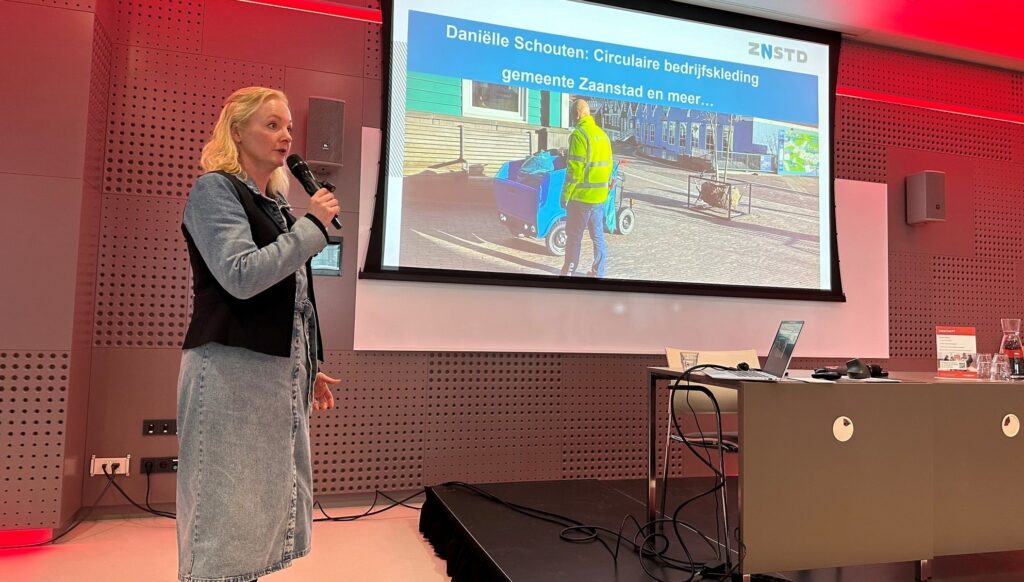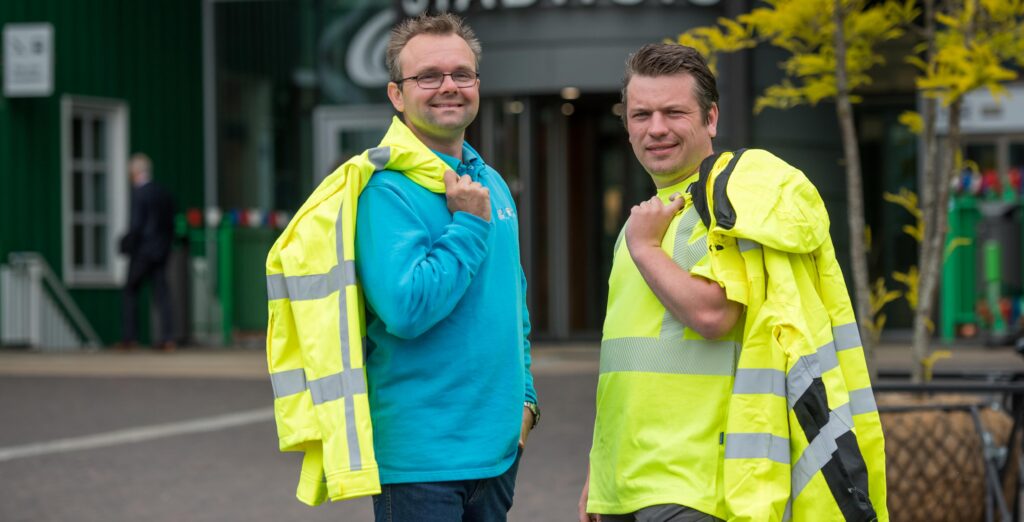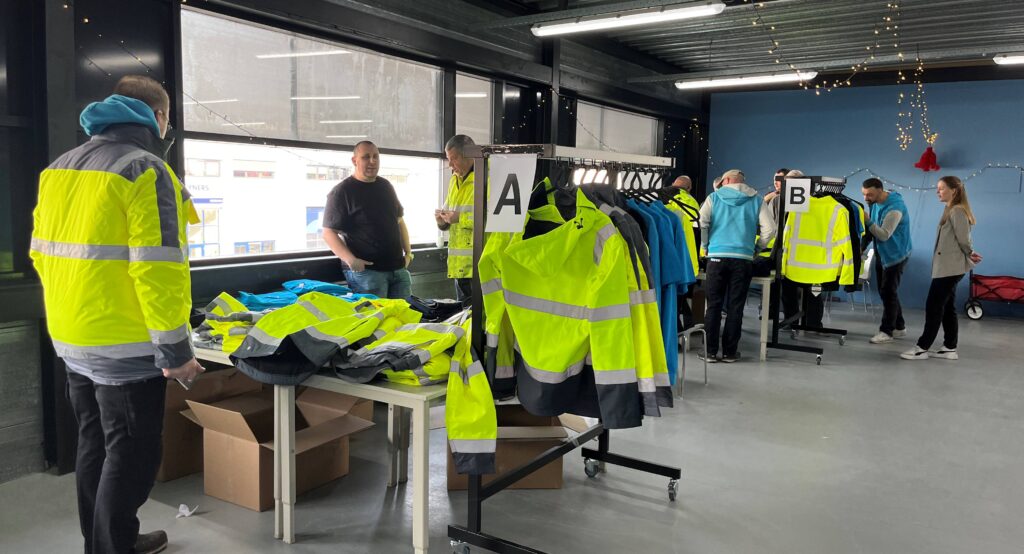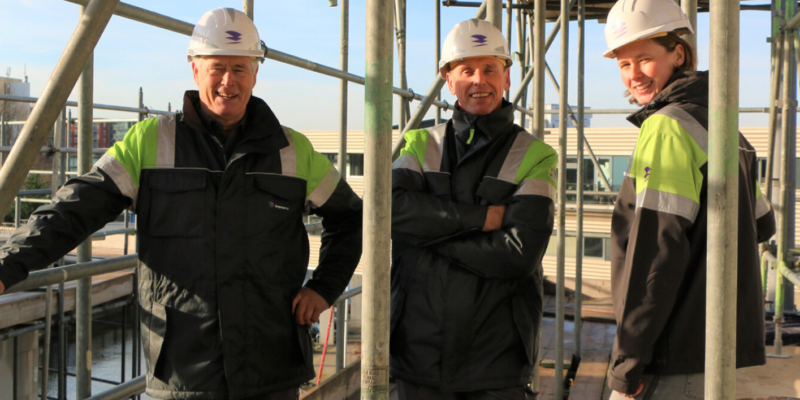Circular textiles in Zaanstad: can it be done differently? A sustainable future for corporate clothing

Through circular procurement, governments minimise the use of raw materials, reuse products and materials and extend their lifespan. Through the use of these methods, the municipality of Zaanstad is already taking important steps towards a more sustainable future. We spoke to Daniëlle Schouten, sustainability advisor at the municipality of Zaanstad.
What is happening in the municipality of Zaanstad with regards to circular textiles?
‘In recent years, we first tendered our company clothing and later also our uniforms of the municipal enforcement officers in a circular way. Here, we were looking for ways to minimise the use of new raw materials, encourage reuse and repair and extend the lifespan of clothing. In addition, we communicate with colleagues and residents that the most sustainable garment is already hanging in their closet. We also promote local second-hand clothing, clothing swap bags, clothing and shoe shopping and door-to-door textile collection. But the main message is that textiles do not belong in the residual waste but eventually, after long use, in the textile container (also old and broken). Recently, we set up a repair scheme to extend the life of garments, so that residents are less likely to throw away clothes and subsequently local clothing and shoe makers get more customers.’

How do you start such a tender?
The municipality of Zaanstad has formulated the following objectives and principles:
‘The municipality of Zaanstad wants to procure clothing with a high wearing comfort, in which employees are recognisable and can work safely. In order to be able to order clothing quickly and easily, Zaanstad aims to offer employees a user-friendly and clear ordering system. The municipality also wants to use this tender to promote sustainability and circularity’.
‘We very consciously applied the R-ladder in the tender and awarded points for it, the higher up the R-ladder, the greater its achievement towards circularity. That means Rethink & Refuse, Reduce, Reuse, Repair and as a last resort Recycle. While preparing the tender, we asked ourselves the question: ‘Do we really have to buy this or can we do it differently? Before starting the tender, we analysed the previous tender, interviewed colleagues and talked to the supplier at the time. This provided insight, but not enough; for instance, our supplier at that time did not want to repair. So we launched a market consultation. We also looked in depth internally at how many and which items we really used and what we didn’t, as well as how many employees there actually were (and still to come) and how much stock was left. In this way, we make smarter decisions and look pragmatically at our procurement needs.’
Can you cite an example of this?
‘In Zaanstad, blue is the signature colour of the corporate style and therefore also is for the corporate clothing. We looked at whether this colour should be visible everywhere. In the end, we advised making only the outerwear specifically in the Zaanstad blue and using ‘standard colours’ for the trousers. We also opted for unisex sizing for the corporate clothing to reduce the number of types and sizes and thus limit the diversity of orders.’

What are sustainability and circularity priorities for you in these tenders?
‘We find it important to have high quality clothing with a long lifespan and the possibility to repair. Standardisation also offers opportunities for circularity. On the contrary, we did not tender on price (only 30%), but much more on service (25%) and using the R-ladder (30%) in addition to post-consumer textiles (15%). By post-consumer textiles, we mean textiles that have already been worn and then discarded or recycled. However, the deciding factor was the fitting session for the wearers based on wearing comfort and fit. They eventually chose the supplier from two shops.’

What are the biggest challenges?
‘A big challenge is to make circular “business as usual”. Why should a new employee get a new garment when suitable second-hand is still available? This thinking really still needs to be taken onboard, which requires behavioural changes and a different way of thinking and doing things. We have planted the seeds within the municipality by organising accessible green lunches, so I am proud to have heard a few months ago during such a lunch – from a purchaser nota bene- ‘the most sustainable thing to do is not to buy’’.
What is your message to other municipalities and companies?
‘My call to other municipalities and companies is to start second-hand clothing and repair tomorrow. Be pragmatic, by making the effort to take a look in the closet. Also be critical, because does anything really need to be ordered? And is new needed at all? A call among colleagues to hand in work clothes they no longer used was a great success. Make use of the R-ladder. You can really make a lot of impact tomorrow already, by taking simple steps.
It is our duty as a government to tender circularly. A key tip is to copy and paste (reuse!) much more from each other. A tender takes so much time and thus money, a waste to do it over and over again. And like Zaanstad, engage with your new supplier for a longer period. We went from 4 to 6 years (2+2+2).’
How do you see the future of circular textiles?
‘Clothing connects people, it’s something everyone is involved in every day. For me, the ideal future would be that we handle clothes differently and use what we already have for as long as possible. In the hospitality industry, for example, it’s quite normal to borrow and pass on work clothes. You take something out of the closet and hand it back in when it needs washing. This is a different relationship with clothes. My dream for the future is to apply this, at least to company clothing. But can we do things differently? Rethink! After all, Henry Ford didn’t come up with a faster horse either.’


